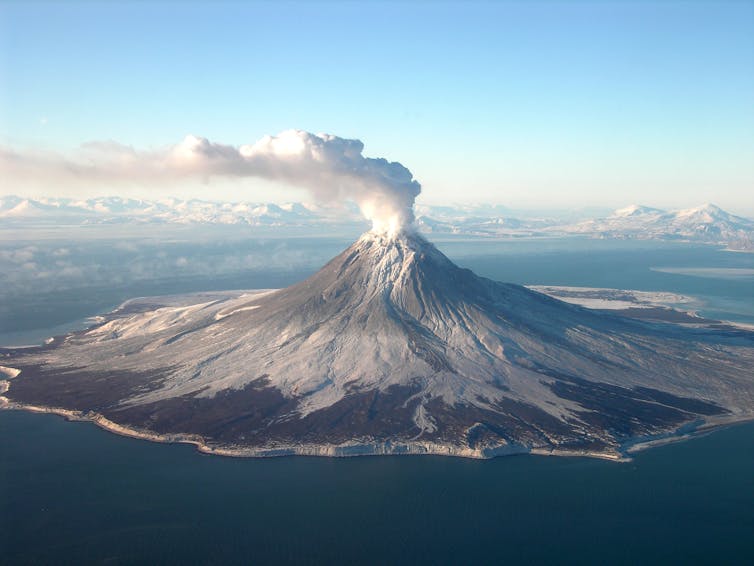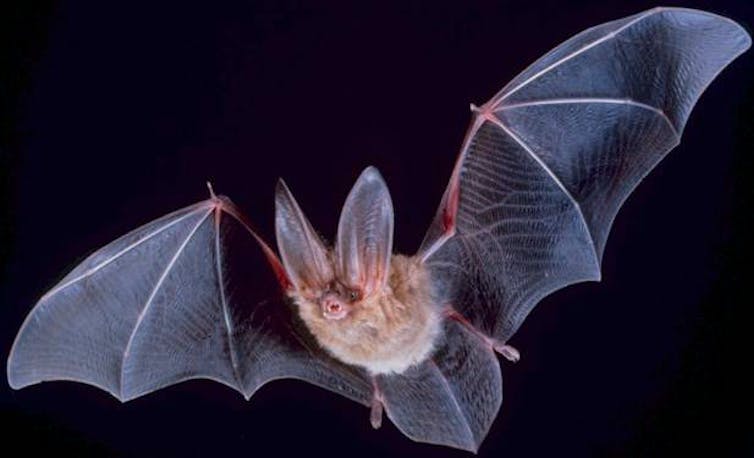How Can the Permian Happen Again
In the past one-half-billion years, Globe has been hitting again and once more by mass extinctions, wiping out nigh species on the planet. And every time, life recovered and ultimately went on to increase in diversity.
Is life simply incredibly resilient, or is something else going on? Could mass extinctions actually assist life diversify and succeed – and if then, how? Given that we're currently facing some other extinction consequence, there'southward extra urgency in trying to work out how mass extinctions affect diversity.
Mass extinction is probably the most striking blueprint in the fossil record. Vast numbers of species – even entire families – disappear speedily, simultaneously, around the earth. Extinction on this scale usually requires some kind of global ecology catastrophe, and then severe and so rapid that species tin't evolve, and instead disappear.

Massive volcanic eruptions drove the extinctions at the end of the Devonian, Permian and Triassic periods. Global cooling and intense glaciation drove the Ordivician-Silurian extinctions. An asteroid caused the terminate-Cretaceous extinction of the dinosaurs. These "Big Five" extinctions get the most attention because, well, they're the biggest. Just lots of lesser yet withal culture-threatening events occurred likewise, similar the pulse of extinction before the end-Permian event.
These events were indescribably destructive. The Chicxulub asteroid impact that ended the Cretaceous catamenia shut down photosynthesis for years and caused decades of global cooling. Annihilation that couldn't shelter from the cold, or find food in the darkness – which was almost species – perished. Mayhap 90% of all species disappeared in just a few years.
Simply life bounced dorsum and the recovery was rapid. 90% of mammal species were eliminated by the asteroid, merely they recovered and and then some inside 300,000 years, going on to evolve into horses, whales, bats and our primate ancestors. Birds and fish experienced similarly rapid recovery and radiations. And many other organisms – snakes, tuna and swordfish, butterflies and ants, grasses, orchids and asters – evolved or diversified at the same time.

This design of recovery and diversification happened later on every mass extinction. The terminate-Permian extinction saw mammal-similar species have a hit, but reptiles flourished after. Afterwards the reptiles suffered during the end-Triassic event, the surviving dinosaurs took over the planet and diversified. Although a mass extinction concluded the dinosaurs, they merely evolved in the first place because of mass extinction.
Despite this chaos, life slowly diversified over the past 500m years. In fact, several things hint that extinction drives this increased diverseness. For one, the most rapid periods of diversity increase occur immediately after mass extinctions. But perhaps more hit, recovery isn't simply driven by an increment in species numbers.
In a recovery, animals innovate – finding new ways of making a living. They exploit new habitats, new foods, new means of locomotion. For case, our fish-similar forebears first crawled onto land after the end-Devonian extinction.
Evolutionary innovation
Extinction doesn't just drive this procedure of speciation. Information technology likewise drives evolutionary innovation. Information technology's not a coincidence that the biggest pulse of innovation in life's history – the evolution of complex animals in the Cambrian Explosion – happened in the wake of the extinction of the Ediacaran animals that went before them.
Innovation may increase the number of species that can coexist because it allows species to movement into new niches, instead of fighting over the onetime ones. Fish itch onto country didn't compete with fish in the seas. Bats hunting at night with sonar didn't compete with birds that were agile during the mean solar day. Innovation means evolution isn't a nada-sum game. Species can diversify without driving others extinct. Only why does extinction drive innovation?

Stable ecosystems may prevent innovation. A mod wolf is probably a far more unsafe predator than a velociraptor, but a tiny mammal couldn't evolve into a wolf in the Cretaceous because in that location were velociraptors. Whatsoever experiments in carnivory would have ended desperately, with the poorly adapted mammal competing with – or only eaten by – the already well-adjusted Velociraptor.
Only, in the lulls afterwards an extinction, evolution may be able to experiment with designs that are initially poorly adapted, only with long-term potential. With the show's stars gone, the evolutionary understudies get their run a risk to prove themselves.
The extinction of Velociraptor gave mammals the freedom to experiment with new niches. Initially, they were poorly equipped for a predatory lifestyle, simply without dinosaurs competing with or eating them, they didn't demand to be terribly good to survive. They only needed to be as good as the other things around at the time. And then they flourished in an ecological vacuum, ultimately evolving into big, fast, intelligent pack hunters.
Creative devastation
Life isn't but resilient, information technology thrives on adversity. Life will fifty-fifty recover from the current wave of human being-induced extinctions. If nosotros disappeared tomorrow, then species would evolve to replace woolly mammoths, dodo birds and the passenger pigeon, and life would likely become even more diverse than before. That's not to justify complacency. Information technology won't happen in our lifetime, or even the lifetime of our species, but millions of years from now.
This thought that extinction drives innovation may even apply to man history. The extinction of ice-age megafauna must have decimated hunter-gatherer bands, but information technology as well may have given farming a hazard to develop. The Blackness Death produced untold human suffering, merely the shakeup of political and economic systems may take led to the Renaissance.
Economists talk about creative destruction, the idea that creating a new gild means destroying the old 1. But evolution suggests there's another kind of creative destruction, where the destruction of the old system creates a vacuum and actually drives the creation of something new and ofttimes meliorate. When things are at their worst is precisely when the opportunity is the greatest.
sleathfackeffaced.blogspot.com
Source: https://theconversation.com/mass-extinctions-made-life-on-earth-more-diverse-and-might-again-122350